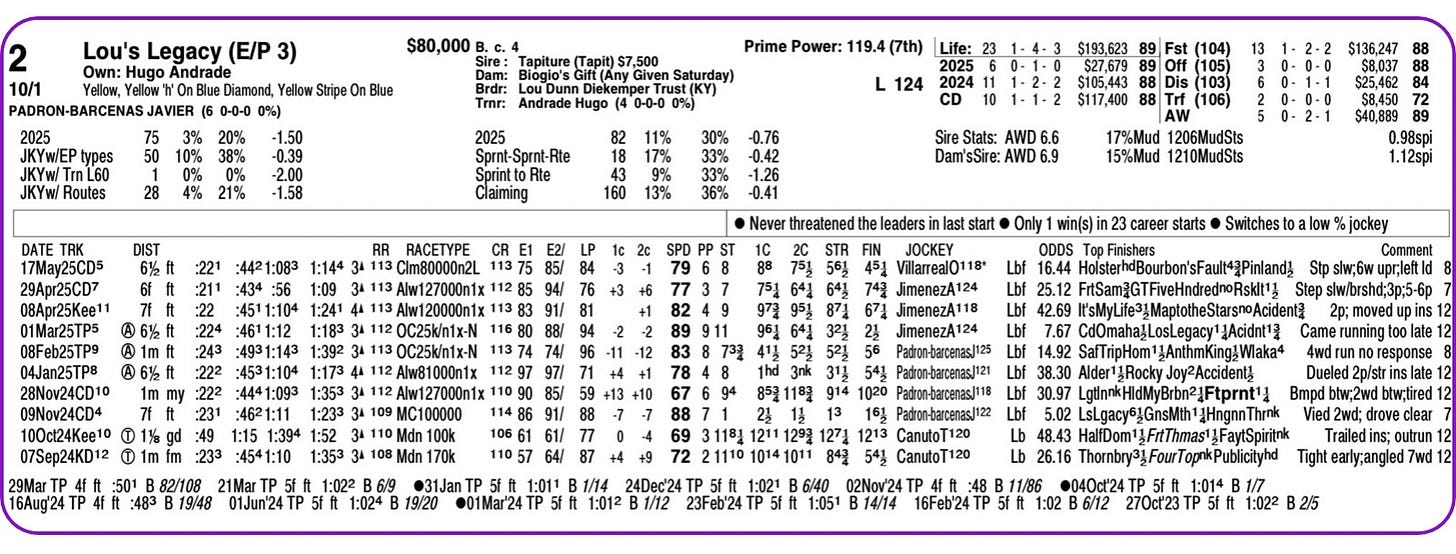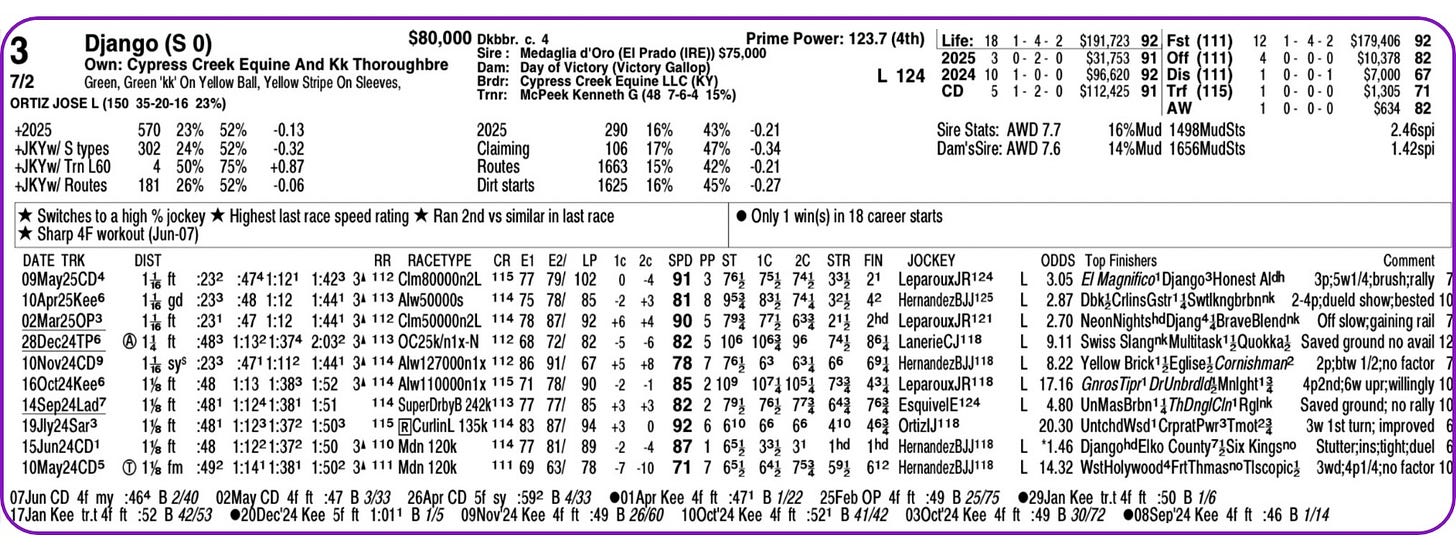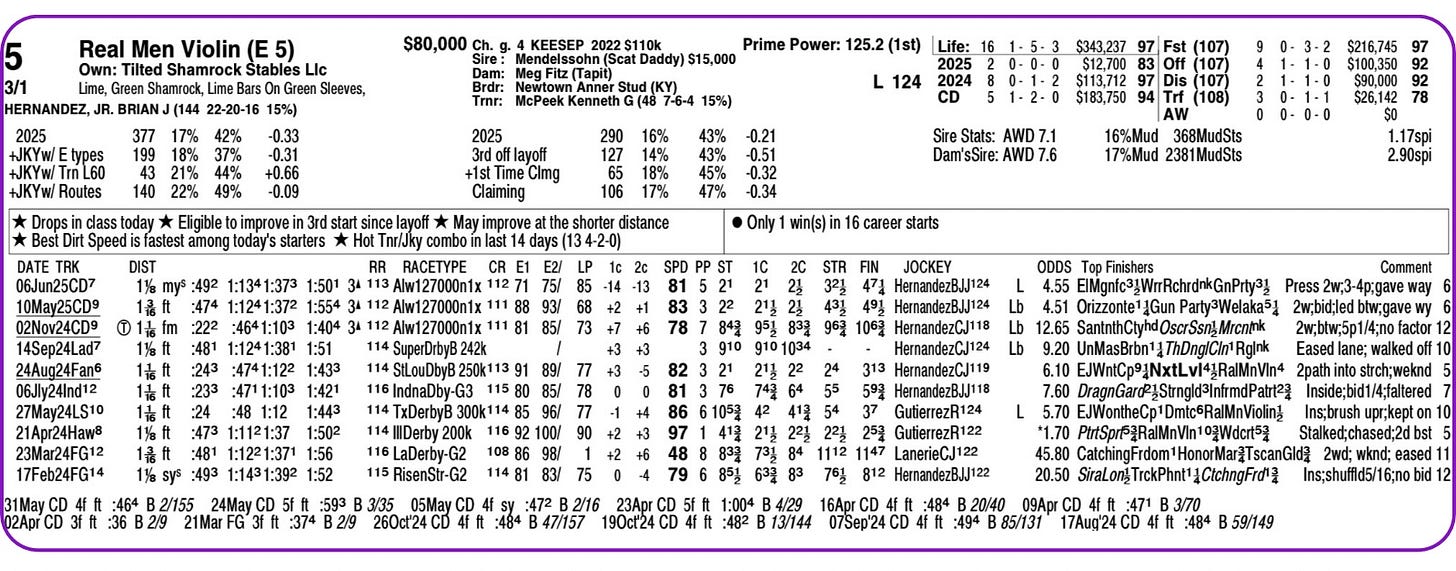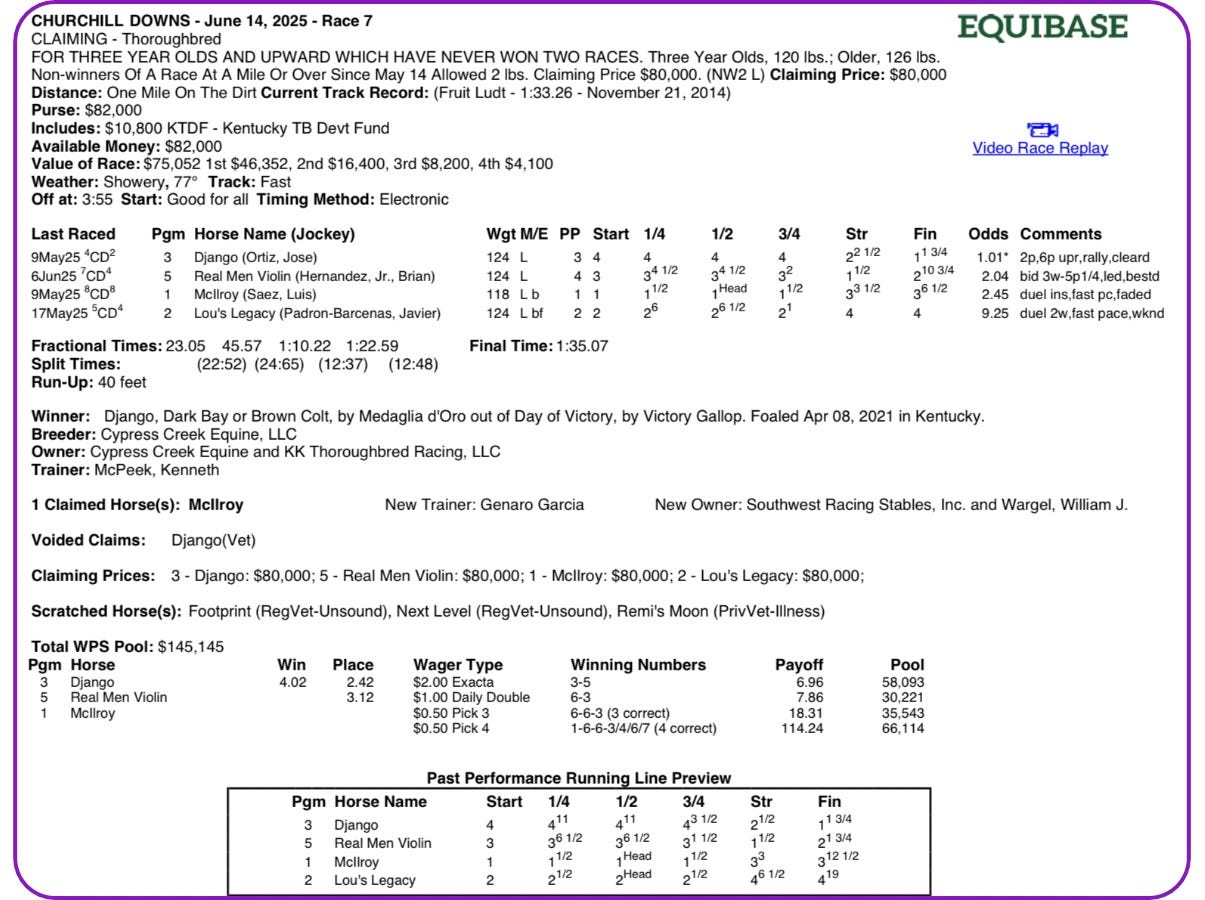The Most Misunderstood Race Shape in Handicapping
How to identify paceless races and avoid betting traps that burn money. Learn the pattern and clues when to shift your handicapping analysis to find the best runner in the race.
What if there are no early horses in a race?
So much time is spent looking for speed duels, pace meltdowns, and which closer could get the trip. What happens when there’s no pace at all?
What is your game plan?
Do you bet on the horse that you feel will take the lead? Do you downgrade any horse who will come off the pace?
Most handicappers freeze when there’s no obvious early speed in a race. That’s where the edge is hiding for those who can think beyond raw speed. The edge is in knowing how to approach the handicapping side to find who is vulnerable. These can be good races to take advantage of because of the confusion.
Remember, horses want to run in their preferred running style. In the case of no one being a true early horse, that leads to everyone talking about how it is a paceless race.
That much they are correct about.
Where the analysis goes wrong is what usually follows. Many people take this as a race to see who should get the lead and bet on them.
Do you see the problem yet?
Backing a horse that doesn’t want to lead the race to win is a death wish. If they haven’t won a race on the lead before, clearly, they aren’t comfortable doing so. What’s even better is when you see a presser or closer who has taken the lead before and faded.
That is confirmation that they do not want to set the fractions.
What many handicappers do is look at that as a positive and say, with today’s race having no true early runner, this presser will be able to get to the front and run away.
Let me be the one to warn you that this thought process needs to stop. So, how should you handicap these paceless races that do not have an early runner?
Look if any horse has ever run close to the pace. This will be your mark in the race as the pacesetter. Now eliminate them. They will be in the lead and not in their preferred running style to win.
How to Spot a Paceless Race
This is where the simple procedure of labeling each horse’s running style will be beneficial.
After seeing you have no early horses, this is the first sign of a race that should have a slow pace. It also means someone will be taken out of their running style. This is the key to projecting pace and a vulnerable horse.
So, who is a possibility to be in the lead?
Going through the past performances, look for horses that normally race in 2nd or 3rd position. They have shown the ability to race near the lead and won’t shy away from going to the front again.
Who Is In Their Positional Comfort Zone?
That is the most important question when handicapping a paceless race. Which horse or horses are going to be in their positional comfort zone?
The presser that has never won a race gate to wire, are they in their positional comfort zone? No. They are in a spot they cannot win against.
This is the trickiest part of the puzzle, seeing which horses will be too close to the pace in this race. That is what makes these types of races so confusing. Identifying the horse that has run the closest to the pace in the past is the first step to narrowing down a paceless race.
These inherited frontrunners are often short prices because the public assumes they’ll get an easy lead. They’re actually vulnerable when racing out of their comfort zone.
Example of Handicapping a Paceless Race
This race from last Saturday at Churchill Downs is the reason to talk about this topic. This is a pattern recognition opportunity to remember for the future. Paceless races all look the same. No early runner, and the horse who goes to the front is a sitting duck.
It cannot be emphasised enough that the leader who has never won from the lead before will be taken out of their preferred running style.
Scratches made this race into a paceless one. Those who had the pattern recognition could have keyed a logical runner and eliminated the horse that projected to take the lead at odds of 2/1.
Look at McIlroy, he has the lone maiden win at Turfway Park two races back and came from deep off the pace to win. He then went to the turf and seemed to be in over his head. Making the class drop in this race made sense. In his short career, we haven’t seen him show any effort to go to the front.
Lou’s Legacy is 1-for-23, and in that win, he went gate to wire. That was a 7-furlong sprint back in November 2024. That was setting a 6-furlong call time of 1:11. Finding a possible fractional time is important because it can help with handicapping the rest of the field. In this instance, it is beneficial because this is a one-turn mile race. It is run in the same setup as the 7-furlong sprint win that Lou’s Legacy had.
His speed isn’t potent when looking through the races after that win. He is content to come from off the pace. He also hasn’t won by doing so. As of now, he could be an option to go to the front.
Django is a horse who always gets betting attention and has yet to deliver a win against winners. His maiden win on June 15, 2024, shows that he wants to come from off the pace to win. Working from that win and going up the past performances, you see that he lost easily against stakes and allowance runners. A class level that is too much for him. In his recent races, he has run against starter allowance and claiming horses. The results have been much better. Again, Django is another runner who isn’t going to take the lead but will get his preferred running style.
The last two races for Real Men Violin are a tipoff of what could come in this race. In his last two starts, he has run near the pace. That was against allowance level runners. This race is an easier class level and against other runners who do not seem pressed to lead the race. Real Men Violin projects to be the horse that is going to be in a running style that isn’t a winning one for him.
If this race wasn’t chaotic enough, let these results be more proof of how important running styles are for horses. Real Men Violin didn’t even take the lead; McIlroy did in a speed duel with Lou’s Legacy. Remember, Lou’s Legacy was another potential front runner with his lone win coming in that style.
Go back and look at McIlroy’s past performances. He has never run in front before. That is a running style he is not comfortable with. He suffered from trying to go to the front.
It confirms how hard these races are to handicap and bet.
Some clues should have tipped off that Django was a legit favorite:
Recent improvement at this class level
Being an odds-on favorite
Getting his preferred running style against a presser who is helpless on the lead
In the end, there are two ways to approach this example race. One is to pass the race because of the obvious chaos if you are looking at straight wagers. Trying to beat a horse taking so much betting action is always tough. As always, the tote board is the most efficient market. The second way would be to eliminate the horses that you felt could take the lead. That would be Lou’s Legacy and Real Men Violin. You’d be left with McIlroy and Django. Those two were the horses that were projected to be in their preferred running style.
These types of races are ones you might have to face when looking at horizontal wagers like a pick 3, 4, 5, or 6. Knowing how to approach them could help eliminate short prices, and that is what puts you ahead of the public.
Framework for Encountering a Paceless Race
Let your fundamentals of handicapping and contender selection bring you to the conclusion that you are facing a paceless race.
Label each horse’s running style
No early runner triggers paceless race pattern recognition
Find which presser or pressers have run on or close to the pace
Eliminate the fastest one
Target the horses who will still get their preferred trip in the race
Shift your thinking from who gets the lead to who can sit their preferred trip in a paceless race. That will be the most dangerous horse in the field.
That is where the money is in paceless races. It’s not about raw speed. It is about positioning. Most of the time, the public gets these races wrong. Shifting your thought process to this can put you and your bets ahead of the public.









